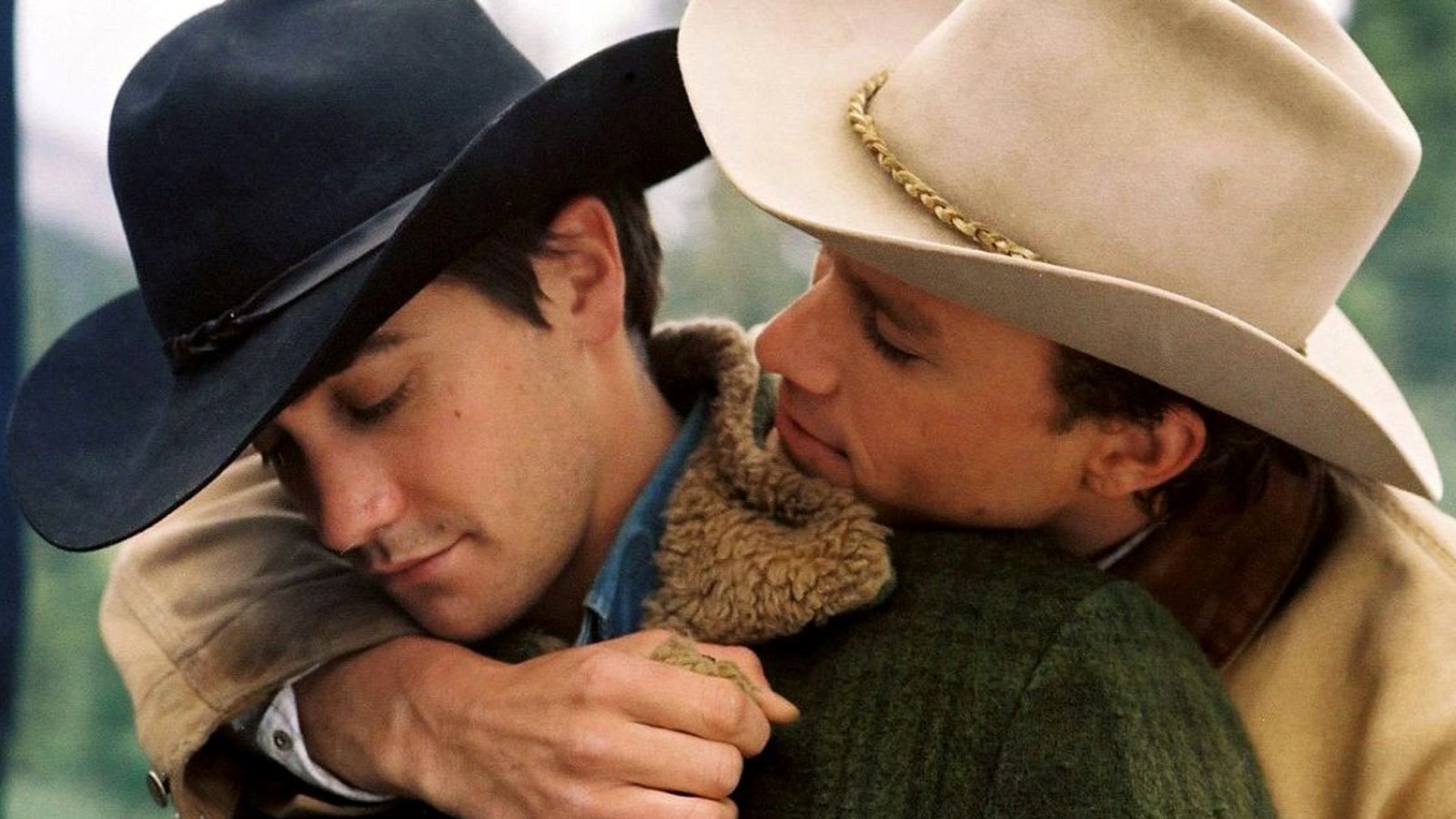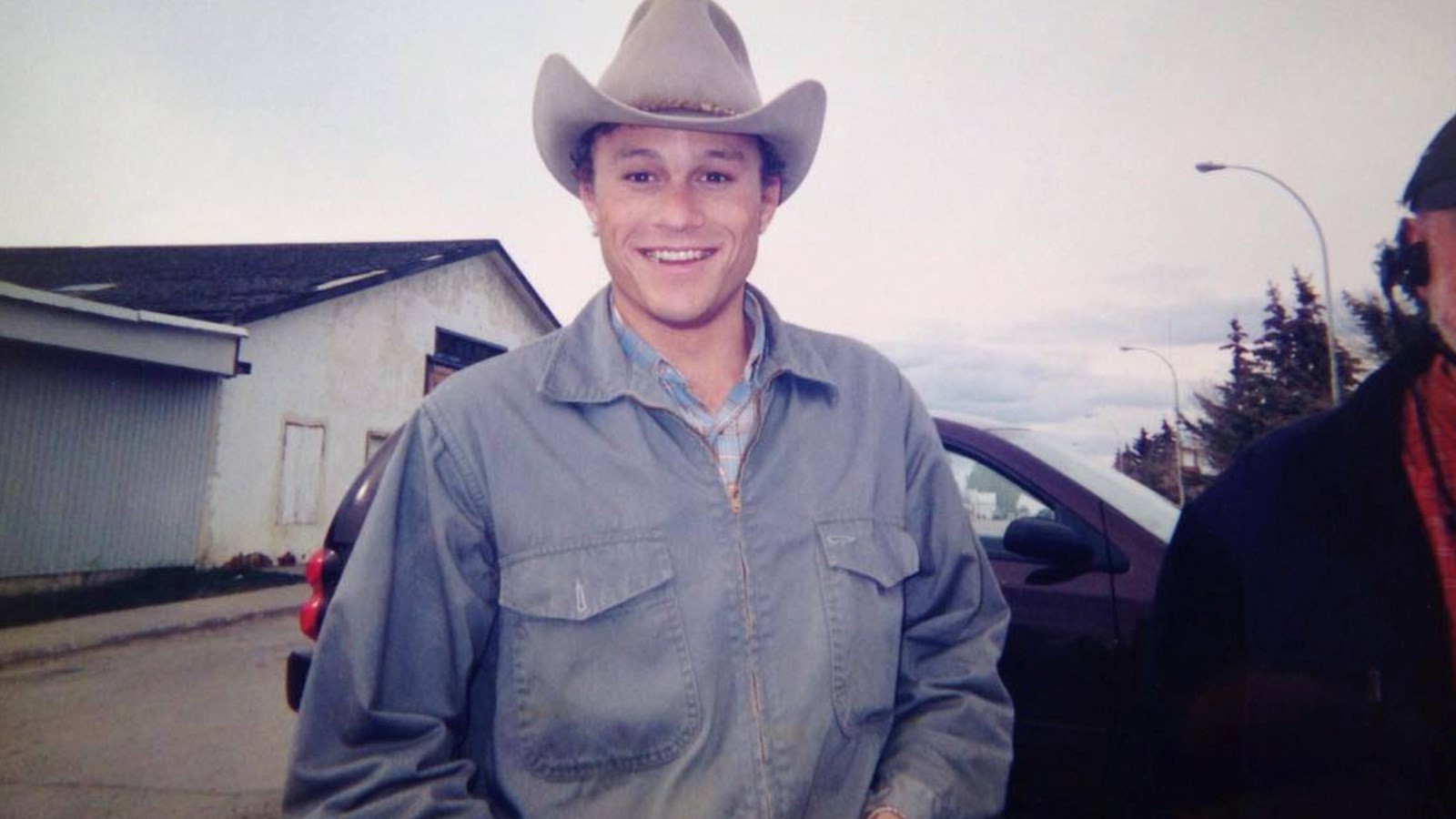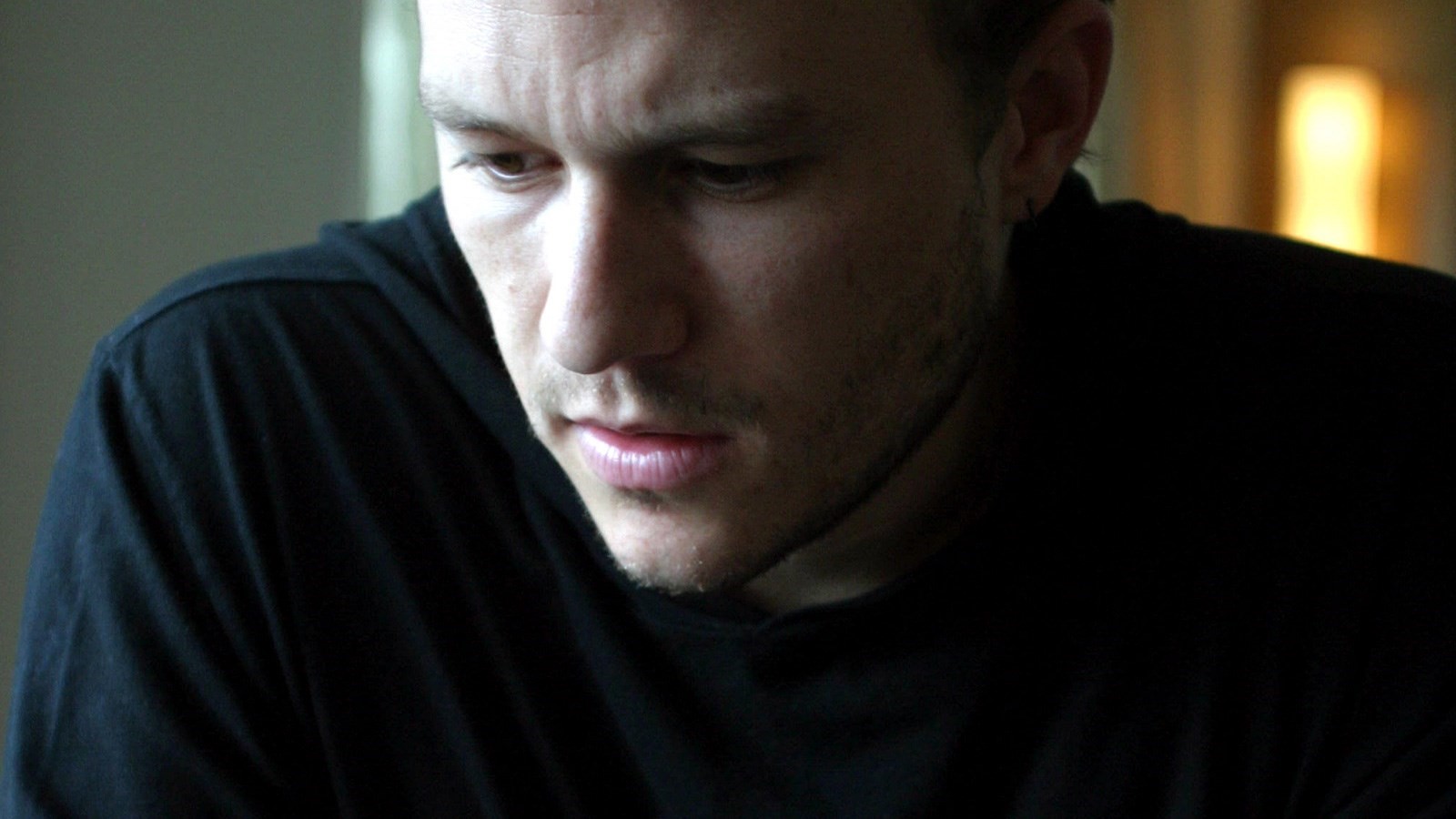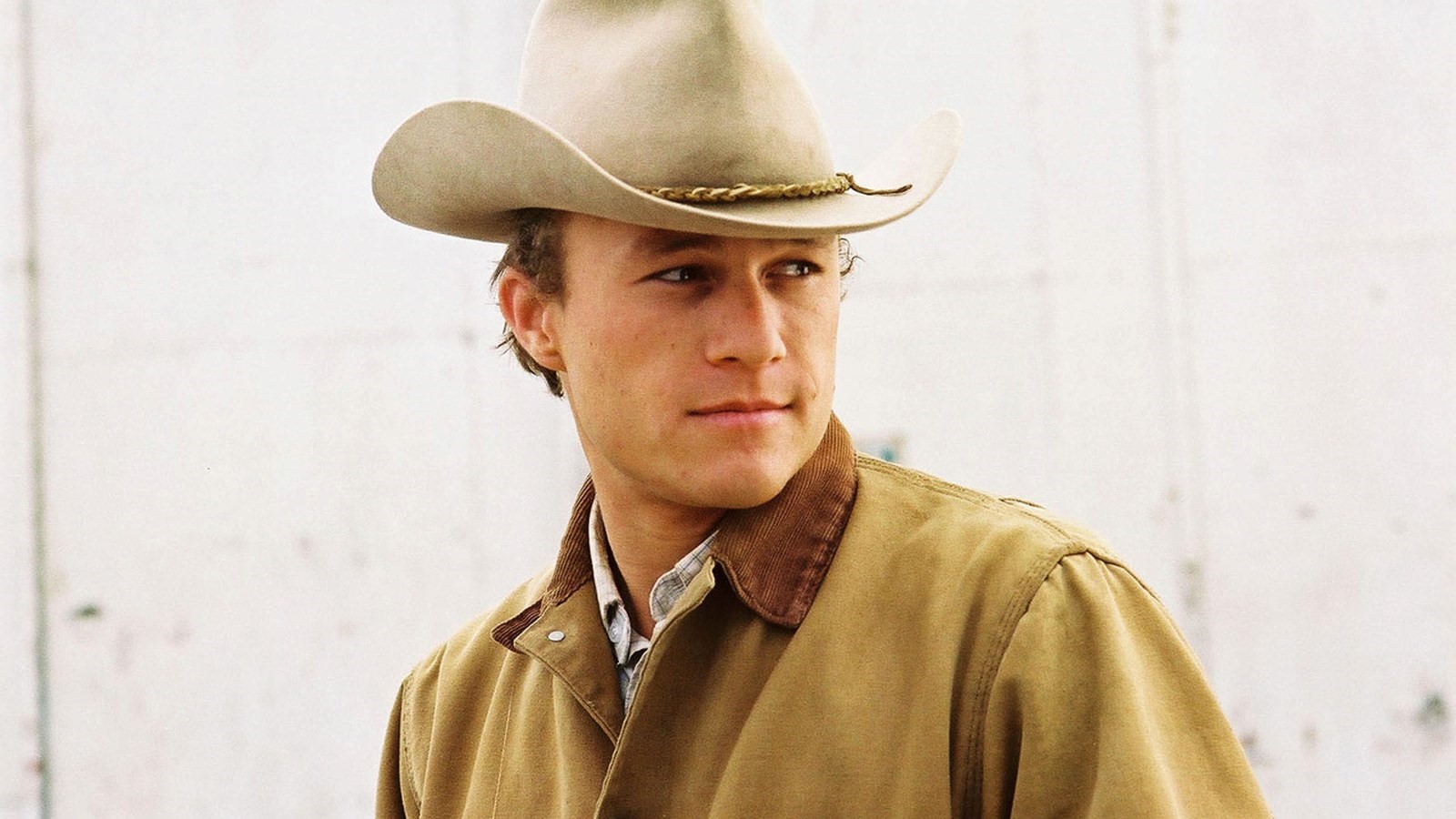The actor’s sexuality was always in question, even after his death, for taking on roles others wouldn’t. Here we look at the life, work and death of the mysterious, much-loved actor
I was 15-years-old and closeted when Brokeback Mountain (2005) came out at cinemas. I refused to see it. I didn’t want to be outed by proxy for having paid actual money to see a “gay” film in public. And there was no getting around the movie being gay. You didn’t go for the story; you went to see Heath Ledger make out with Jake Gyllenhaal in a Stetson. The film was being parodied ad nauseum before its release. Late night show host Jay Leno made 15 jokes about it just in January of 2006. David Letterman did a “top ten signs you’re a gay cowboy” segment. Each punchline reaffirmed my decision to maintain a safe distance.
Even Jake Gyllenhaal wanted to steer clear. “Heath and I were both saying, ‘Let’s get the love scenes over as fast as we can – all right, cool. Let’s get to the important stuff’,” Gyllenhaal is quoted as saying in the December 26, 2005 edition of tabloid magazine Star. I’m not sure what he means by “important stuff”, since the mostly wordless film leans so subtly into queerbaiting that the kissing comes as a shock in comparison. Without the makeout session, the “I wish I knew how to quit you” line, it would be nothing more than a softcore tease about the trials of camping.
“Realistically, let’s talk about the giggle factor,” an anonymous Hollywood executive shrieked in a 2004 Salon article, published while the film was still in its casting phase. It’s exceedingly rare for a film, which hasn’t yet solidified its cast, to be pored over outside of a news article in trade magazines like Variety or The Hollywood Reporter. Here, there was already a thinkpiece: “Will Jake and Heath shatter Hollywood’s taboo against gay sex?” the headline reads. By this exec’s barometer, no. Intimacy between two men was a novelty to be uncomfortably giggled off screen between mouthfuls of popcorn. “I mean, it is a story about gay cowboys!” the executive continued. “That is the most daring thing you can do.”

It hit even closer to home because the movie was filmed in Canada’s Kananaskis country, a few hours’ drive from where I grew up. My cousin, I remember, told me about some of her friends that ran into Ledger in a small Alberta town where he was filming. He was shy, they said. Not very impressive in person. Cute, but no big deal. A short scene was recorded at a makeshift grocery store in Crossfield, Alberta. “There was a bunch of early teen girls waiting to talk to him and I remember me and my friend Anne-Marie were at the front, so we got to speak to him directly,” recalls Alana, now 26. “He was very shy, almost hiding behind the man he was with, but he was very friendly.”
A moment in the recent inch-deep documentary, I Am Heath, made about the buffed surface of his memory, talks about how Ledger didn’t seek fame. He taught himself how to act by recording himself on camera and watching back the footage – in the same way basketball players review game play. Acting found Ledger, all cherubic-faced and curly-haired. He was not yet dead behind the eyes from lack of sleep and a steady mocktail of prescriptions. (He apparently slept for two to four hours a night while filming The Dark Knight – a method approach for his role as the Joker). “I remember he told me, ‘I’m not going to be that guy (a smug Hollywood pin-up). I have no interest in being that guy. I’m not that guy, and I’ll show you,’” Ledger’s childhood friend, N'Fa Forster-Jones, explains of his aversion to celebrity in I Am Heath.
“He taught himself how to act by recording himself on camera and watching back the footage – in the same way basketball players review game play”
He presented himself, consciously or not, as far more elusive compared to his A-list peers. He hid behind a producer while meeting fans. He attempted to exfoliate the teen girl marketing after A Knight’s Tale was released by jumping into indie projects like Ned Kelly (2003) and Lords of Dogtown (2005). “There was a lot more mystery to Heath than to a lot of other prominent young actors,” says Matt James, 19, who runs the tabloid magazine archive website Pop Culture Died in 2009. Yet he became an accidental pin-up, launching first into the collective consciousness as the brooding teen with shoulder-length brown hair in 10 Things I Hate About You (1999) and then doubling down with 2001’s A Knight’s Tale.
“My friend Anne-Marie asked him if she could take his picture, he said yes,” Alana remembers about their meeting in 2004. “We really would have loved a picture with him, but there were just too many people and he didn't have a lot of extra time. We explained to him how we were in trouble with our English teacher for skipping school and were told we would have to write an essay about how it’s bad to skip school. Before he said goodbye, he told us, ‘Good luck with those essays’ in his sexy, Australian accent. We were so giddy and happy we got to have even a short conversation with him!”

He allowed them to take his photograph in costume as his Brokeback character Ennis Del Mar. He looks happy in the photo. Perhaps they didn’t anticipate, along with the general public, how a gay cowboy film with a budget of $14 million would unzip the pants of Hollywood and open the floodgates for more progressive, LGBT-positive films. Its impact was immeasurable. But you already knew that.
Heath Ledger was famous for being gay. Even though he wasn’t. Not many know that one of Ledger’s first roles was a gay cyclist. In 1996, still pining for any screen time, he was offered the part of either a swimmer or an Olympic-bound gay cyclist on Australian TV show Sweat. He took on the gay cyclist, Snowy Bowles, because it was more challenging. He had barely started acting and he knew how to play Hollywood, how to trigger the giggle factor, and would do so over 26 episodes before the series’ cancellation. It was the first time a gay teenager had been portrayed on Australian television. He didn’t think twice about his choice, but he was tormented for playing a gay character.
“I had small occasions where I’d get bullied on the streets for (playing a gay character). But I was never out to prove myself or my sexuality – it didn’t really bother me. I think if that was an issue, I wouldn’t have done (Sweat); I wouldn’t have done Brokeback Mountain” – Heath Ledger
“I actually remember getting harassed on the street,” Ledger told The Advocate. He covered the January 2006 issue when making the press rounds for Brokeback. “So I had small occasions where I’d get bullied on the streets for it. But I was never out to prove myself or my sexuality – it didn’t really bother me. I think if that was an issue, I wouldn’t have done the show (Sweat); I wouldn’t have done Brokeback Mountain. This character too, in this TV show – for starters, it was the first job I’d had in front of a camera. I had no idea what I was doing. It was a terrible performance; it was a terrible TV show – I’m awful in it. But you really can’t compare the two – it’s just a teenage kid who confesses to his friend that he’s gay. It’s not really that interesting,” he says, downplaying his choice. “But no, it was never a concern for me, and the press didn’t really pick up on it. I don’t think anyone saw the show anyway, you know what I mean? It wasn’t like a big hit.”
Nothing changed in the wider culture as a result of his playing a gay cyclist on a middling Aussie soap. Mostly because nobody saw the show. To call it brave is to overestimate its significance. And to call Heath Ledger gay is flawed logic, but it sure felt that way. How he played Ennis so tenderly, almost wordlessly – it seemed real. Even the way he kissed was thought through. “Jake positions himself this way, that way. He tries everything – like DeNiro or something,” director Ang Lee told The Advocate. “Heath is not like that. He has a specific target within him.” Lee instructed them to be a bit violent while shooting, to give Gyllenhaal “the most Western-heroic kiss.” Here’s the result.

Ledger hated the conveyer belt of jokes about his career-defining role as a gay cowpoke. “A lot of times people would want to have fun and joke about it, and he was vehement about being serious, to the point where he didn’t really want to hear about anything that was being made fun of,” his costar Jake Gyllenhaal told Out magazine. Even in death, he couldn’t escape the label. Members of Westboro Baptist Church pledged to fly to Western Australia to picket Ledger’s funeral over his performance in Brokeback. The hate group wrote an open letter to the family of Heath Ledger. “You owe it to the youth of the world, whom Heath misled via Brokeback Mountain into believing it was OK to be gay […] to use Heath’s funeral to correct that lie. All those whom Heath misled will arrive ultimately in Hell, and they will curse Heath to his face throughout all eternity.”
“Heath wasn’t necessarily someone that was targeted by the tabloids, at least prior to his death,” adds gossip blogger Matt James. “And when he was written about, his sexuality never came into question – even during the release of Brokeback. Whenever I think about his death, I think about a couple of things that happened in response to it: I think about TMZ airing a livestream of his body bag being rolled out of his SoHo apartment, and I think of Perez Hilton advertising T-shirts on his site that said: ‘Why couldn’t it be Britney?’”
“I think about TMZ airing a livestream of his body bag being rolled out of his SoHo apartment, and I think of Perez Hilton advertising T-shirts on his site that said: ‘Why couldn’t it be Britney?’” – Matt James, founder of Pop Culture Died in 2009
“Heath Ledger is now in Hell, and has begun serving his eternal sentence there,” Westboro church’s missive concluded. Fox News’ John Gibson played the “I wish I knew how to quit you” clip from the film, hours after Ledger’s death was confirmed. He then joked, “Well, he found out how to quit you.” Ledger’s body was now gone, and he would never be able to live down playing a queer. Though his performance as the Joker was fresh in the public’s mind, and his unfinished movie with Terry Gilliam had to find a new lead, the stolen kiss with Jake Gyllenhaal is what kept replaying in both minds and television segments in the months that followed.
When you pre-empt the narrative by dying prematurely, or of arriving ultimately in Hell, you become frozen in time. You’re remembered by what people want to remember you for. All he left was a string of unfinished projects pregnant with possibility. All we were fed were tabloid narratives about how he may or may not have died in Mary-Kate Olsen’s apartment (he didn’t), about how he may or may not have been a drug addict (he wasn’t), and how he may or may not have gone Too Method, taken it too far.
“We talked about the ability of the character to cry,” Candy director Neil Armfield said of working with Ledger in an interview with Metro magazine. “And (Heath) said, ‘I’d really love, in all the drying out sequence, for the pain of it, for it not to release. For him to be holding on, and for it all to be inside – but in the shower I would really like to let go.’ Because it was written that he just sits in the shower whimpering, actually. It was his idea, and he did give himself a black eye in the process.”
“It was scary…” Armfield continued. “For a while I thought, ‘Oh, I think it’s gone too far’.”
Was he gay? No. He just played a very convincing gay character. “A lot of people say that Heath and Jake gave the performances of their liiiiives,” Oprah strings out the words in her signature Oprah way on a special Brokeback-centric episode of her talk show in 2005. The camera pans to show Heath, visibly pleased, but coy. Proud but reserved. The man was still a mystery, even after all of the awards fanfare shot his star out of Hollywood’s cannon. Little did Oprah, or anyone, know at the time that it would be the performance of Heath Ledger’s life. At least for me – a young, closeted gay man – it was.

